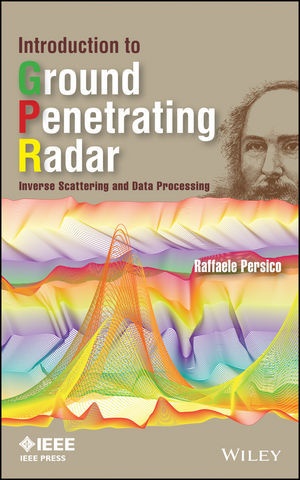Read more
"This book presents a comprehensive treatment of ground penetrating radar using both forward and inverse scattering mathematical techniques. Use of field data instead of laboratory data enables readers to envision real-life underground imaging; a full color insert further clarifies understanding. Along with considering the practical problem of achieving interpretable underground images, this book also features significant coverage of the problem's mathematical background. This twofold approach provides aresource that will appeal both to application oriented geologists and testing specialists, and to more research-oriented physicists and engineers"--
List of contents
Foreword xiii
Acknowledgments xvii
About the Author xix
Contributors xxi
1 INTRODUCTION TO GPR PROSPECTING 1
1.1 What Is a GPR? 1
1.2 GPR Systems and GPR Signals 4
1.3 GPR Application Fields 5
1.4 Measurement Configurations, Bands, and Polarizations 6
1.5 GPR Data Processing 8
2 CHARACTERIZATION OF THE HOST MEDIUM 10
2.1 The Characteristics of the Host Medium 10
2.2 The Measure of the Propagation Velocity in a Masonry 11
2.3 The Measure of the Propagation Velocity in a Homogeneous Soil 13
2.3.1 Interfacial Data in Common Offset Mode with a Null Offset: The Case of a Point-like Target 13
2.3.2 Interfacial Data in Common Offset Mode with a Null Offset: The Case of a Circular Target 17
2.3.3 Interfacial Data in Common Offset Mode with a Non-null Offset: The Case of a Point-like Target 18
2.3.4 Noninterfacial Data in Common Offset Mode with a Null Offset: The Case of a Point-like Target 22
2.3.5 Interfacial Data in Common Midpoint (CMP) Mode 25
2.4 Lossy, Magnetic, and Dispersive Media 27
Questions 31
3 GPR DATA SAMPLING: FREQUENCY AND TIME STEPS 32
3.1 Stepped Frequency GPR Systems: The Problem of the Aliasing and the Frequency Step 32
3.2 Shape and Thickness of the GPR Pulses 36
3.3 Stepped Frequency GPR Systems: The Problem of the Demodulation and the Frequency Step 40
3.4 Aliasing and Time Step for Pulsed GPR Systems 45
Questions 47
4 THE 2D SCATTERING EQUATIONS FOR DIELECTRIC TARGETS 48
4.1 Preliminary Remarks 48
4.2 Derivation of the Scattering Equations Without Considering the Effect of the Antennas 51
4.3 Calculation of the Incident Field Radiated by a Filamentary Current 61
4.4 The Plane Wave Spectrum of an Electromagnetic Source in a Homogeneous Space 61
4.5 The Insertion of the Source Characteristics in the Scattering Equations 65
4.6 The Far Field in a Homogeneous Lossless Space in Terms of Plane Wave Spectrum 69
4.7 The Effective Length of an Electromagnetic Source in a Homogeneous Space 73
4.8 The Insertion of the Receiver Characteristics in the
Scattering Equations 75
Questions 77
5 THE 2D SCATTERING EQUATIONS FOR MAGNETIC TARGETS 79
5.1 The Scattering Equations with Only Magnetic Anomalies 79
5.2 The Contribution of the x-Component of the Fitzgerald Vector 83
5.3 The Contribution of the z-Component of the Fitzgerald Vector 88
5.4 The Joined Contribution of Both the x- and z-Components of the Fitzgerald Vector 93
5.5 The Case with Both Dielectric and Magnetic Anomalies 94
Questions 95
6 ILL-POSEDNESS AND NONLINEARITY 96
6.1 Electromagnetic Inverse Scattering 96
6.2 Ill-Posedness 97
6.3 Nonlinearity 97
6.4 The Ill-Posedness of the Inverse Scattering Problem 100
6.5 The Nonlinearity of the Inverse Scattering Problem 103
Questions 103
7 EXTRACTION OF THE SCATTERED FIELD DATA FROM THE GPR DATA 105
7.1 Zero Timing 105
7.2 Muting of Interface Contributions 106
7.3 The Differential Configuration 110
7.4 The Background Removal 111
Questions 115
8 THE BORN APPROXIMATION 116
8.1 The Classical Born Approximation 116
8.2 The Born Approximation in the Presence of Magnetic Targets 119
8.3 Weak and Nonweak Scattering Objects 120
Questions 121
9 DIFFRACTION TOMOGRAPHY 122
9.1 Introduction to Diffraction Tomography 1
About the author
RAFFAELE PERSICO, PhD, received his degree in Electronic Engineering from the University of Napoli Federico II and his PhD in Information Engineering from the Second University of Napoli. He was a Research Scientist at the Consortium CO.RI.S.T.A., a member of the Institute of Electromagnetic Sensing of the Environment (IREA-CNR), and a member of the Institute for Archaeological and Monumental Heritage (IBAM-CNR). He chaired the 13th International Conference on Ground Penetrating Radar.
Summary
This book presents a comprehensive treatment of ground penetrating radar using both forward and inverse scattering mathematical techniques. Use of field data instead of laboratory data enables readers to envision real-life underground imaging; a full color insert further clarifies understanding.

